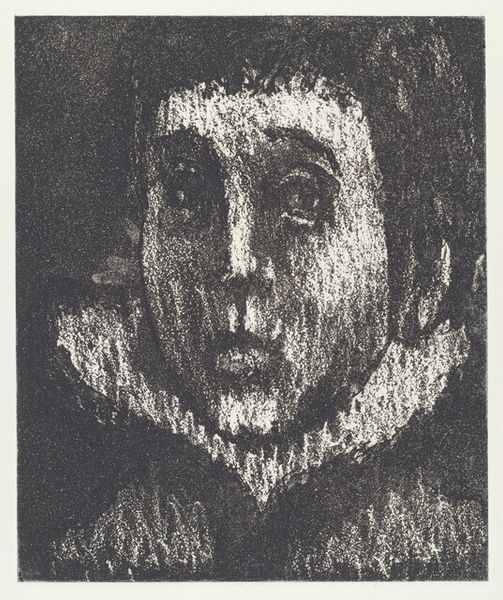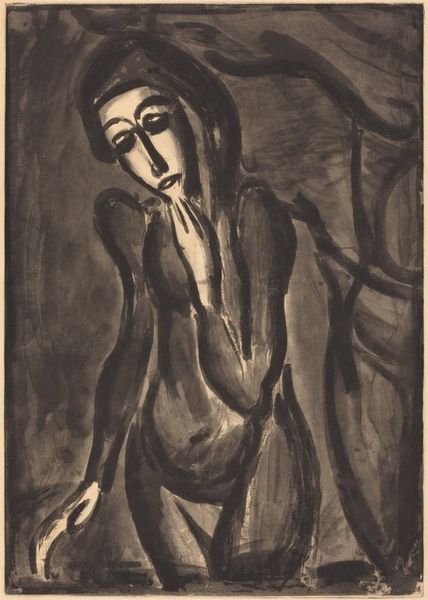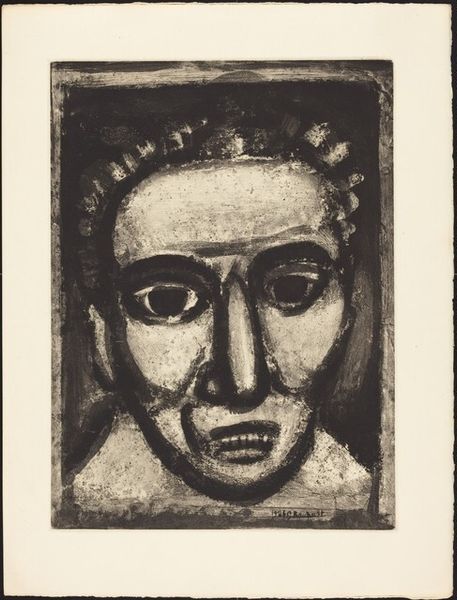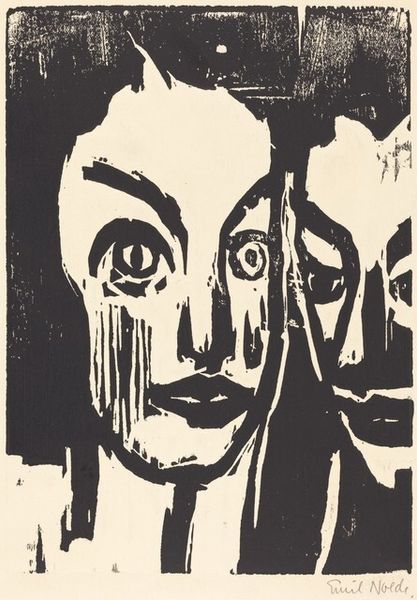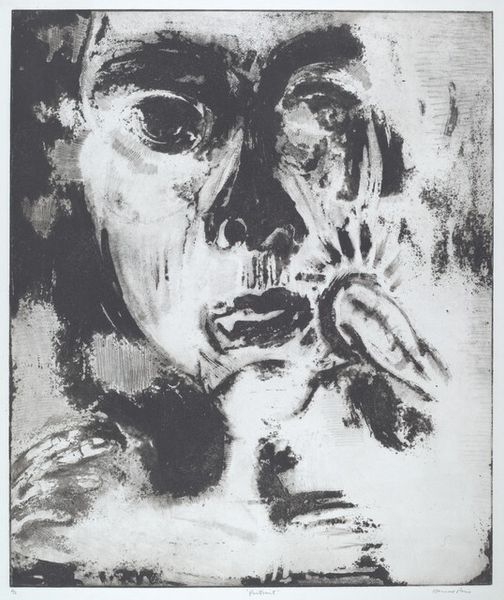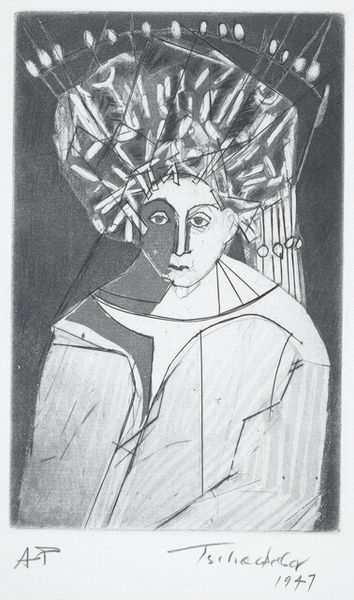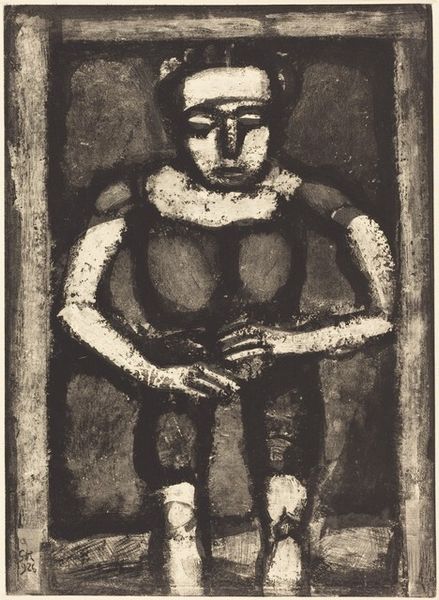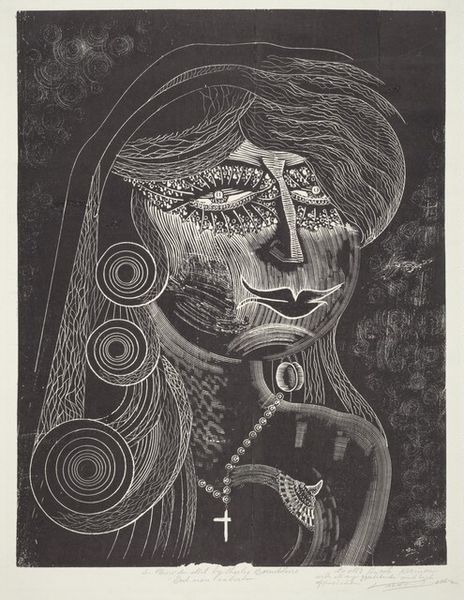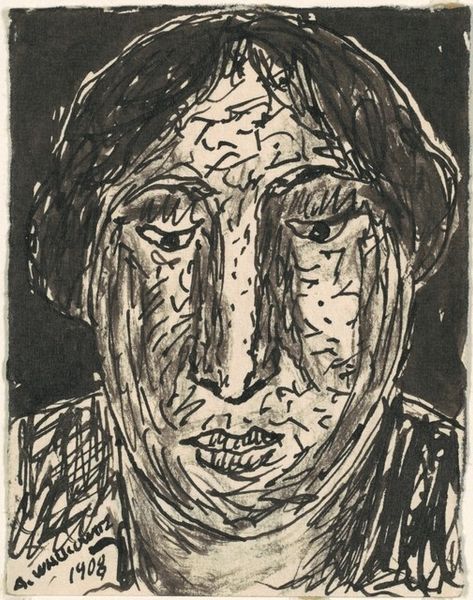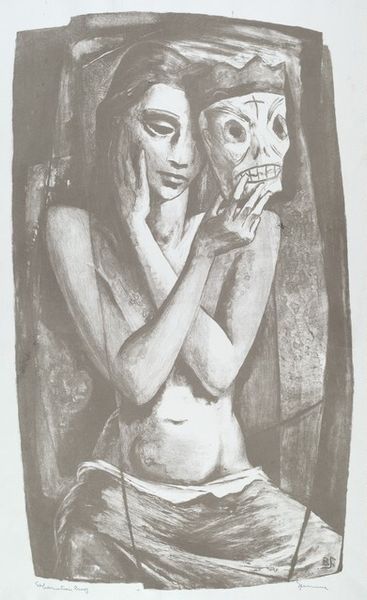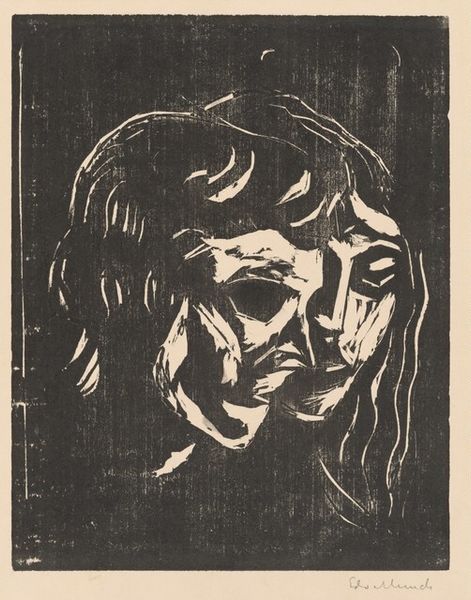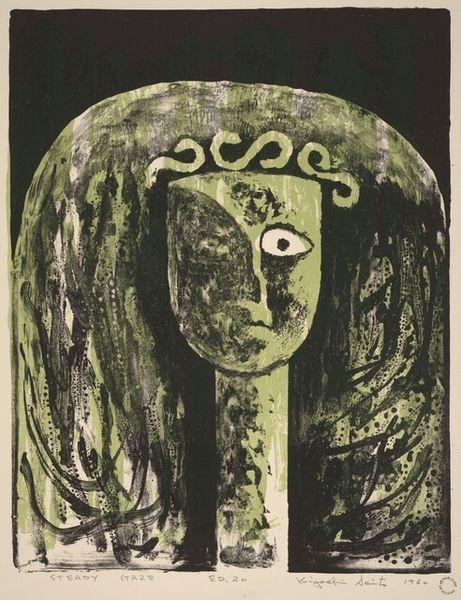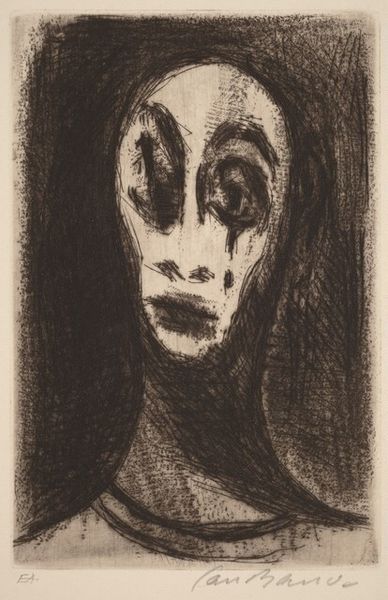
Copyright: National Gallery of Art: CC0 1.0
Curator: The anxious mood in this drawing is immediate. It almost physically pulled me in. Editor: It's a powerful piece, indeed. What you're looking at is "Lot's Wife," a graphite drawing done around 1961 by Caroline Durieux. She was known for her experimental printmaking techniques, challenging artistic conventions, and a fascinating exploration of material processes. Curator: Graphite...It's used almost as paint. See how the marks almost look smudged. There's also the material availability of graphite during this period to consider— the mid-20th century marking the industrial popularization of artistic and design tools. The mass availability must have impacted Durieux’s method. Editor: The anxiety feels pointed. The source material, of course, casts Lot's wife as punished for disobedience, for looking back at the destruction of Sodom. I can't help but view it through the lens of female agency – or the lack thereof – in historical and religious narratives. Was she disobedient or longing for community or her home? Curator: And yet the drawing is very object-like and tangible to me—how her head covering seems molded and solid as a rock formation. She even looks like a figure turned into stone by an elemental event or a consequence. Look how the drawing itself transforms the narrative through the physicality of graphite. The act of transforming material mirrors the story's theme, an almost perverse doubling of material into a figurative depiction of a figure turned into salt. Editor: Right. The gaze seems accusatory, reflecting, perhaps, a sense of betrayal by a patriarchal God or a male-dominated societal structure. Curator: It's about understanding the context within which she made the choice to disobey, and how these choices—or lack thereof—shaped women’s roles in society and art itself. It highlights labor practices, artistic tools and material consumption, as well as their own forms. Editor: Examining gender, power and representation through Durieux's expressive choices makes the original narrative both intimate and urgent, even decades later. Curator: By attending to the artist’s conscious manipulation of materiality, what comes forward is a profound tension between content, form, and cultural production and consumption. Editor: Right. Thinking about these layers—historical narrative, Durieux’s artistic process and personal background and cultural resonance for modern viewers – adds so much richness to our viewing experience.
Comments
No comments
Be the first to comment and join the conversation on the ultimate creative platform.
